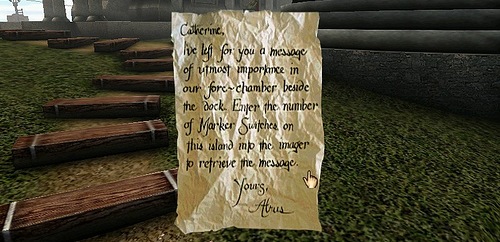If you have followed the train of thought in our two previous posts on Home Pages Suck and Home Pages Suck On Google, then this post will be no surprise to you. Again we are presenting some unconventional thinking. It's a different way of looking at things. Sometimes you may see things a certain way because you have never questioned what implicit assumptions you are making. Here we will question some of those assumptions.
Home Pages Are Getting Less Popular
We should add immediately that this is not breaking news. The signs have been there for some time if you had ever thought to consider them. Others have already started out on this path. Back in January of this year, Rick Stratton was writing about The Death Of The Home Page.
Your Home Page's importance is dying. Google started this trend. A search in Google "deep linked" to the specific story on your site. Visitors never saw that Home Page you spent so much time on. Then RSS feed readers helped further reduce the Home Page's power. Your best readers suddenly bypassed the Home Page and visited the full story directly.
Later in the same month, Joanna Pineda took up the same theme in Home Pages Dead? Where Are Your Visitors Going?
I started checking our usage reports. Sure enough, the home page of this blog gets between 7-10% % of the total traffic in any given month and 6-9% of total entry pages. It makes sense given that most of the traffic comes from the blogs RSS feed, e-mail updates, social media pages and search engines, all of which direct visitors to specific pages, NOT the home page.
Have you noticed the same effect? Have you changed what you are doing as a result? Here we will examine some of the reasons why you should. Of course it depends what you want your online properties to do for you. However I imagine most of us want more visitors to our websites and we want them to be so impressed by what they see that they explore, take some appropriate action and hopefully wish to return in the future. A short-hand way of describing what our websites should be is that they should be 'engaging'. In other words, visitors interact with them in a positive way.
Rules of engagement
Your toughest challenge in building your website traffic is the new visitors, those who are coming for the first time. The page they see when they arrive will determine whether they stay or go. Hopefully they will be so 'engaged' that they will want to revisit, perhaps by making the website one of their favorites. We can summarize these ideas in the following Rules of Engagement in website design.
- Design for new visitors
- Design what they see first
- Make it so engaging that they will wish to revisit
Engagement Through Instant Eye-Appeal - Packaging
The Internet has been around about ten years or so. Many of us have been involved in products that rely on eye appeal for much longer than that. That longer experience may color how we think about creating eye appeal.
One classic example is the design of that soup can so that it will stand out on the supermarket shelf. It is not meant to catch the eye of repeat buyers, since they already know what they like. Instead you are trying to appeal to others who may never have tried the soup. The package design is critical here. As potential buyers scan the shelves, your soup can must attract their eyes.
Engagement Through Instant Eye-Appeal - Print Newspapers
Soup cans are only one example of products where the initial impression must engage the potential buyer. Print newspapers are set out on the rack in the store and your front page must be the one that attracts attention. Unless it does, prospects may never skim the newspaper to see whether they might like to purchase it.
Designing Websites - Instant Eye-Appeal
Given this experience over the years with the physical products, it is not surprising that when it comes to designing a website we instinctively think along the same lines. Surely the Home Page is a little like that front page of the newspaper. Is it not the most important web page on the website? Most web designers would see it that way.
There are many examples I could quote to support that statement but perhaps I will give kudos to someone, who really has some great ideas on website design. That is Patrick Sexton and here is one article I particularly liked: An In Depth Guide to Creating Small Websites That Rank Well.
However within that, you will find one of his key tips is the following:
I need to make a good Home Page.
I have a domain, I have a header, now I need to figure out what the site should include and how it will be presented. The Home Page is important, and should illustrate quickly to someone what the site is about. I wanted a visual Home Page that clearly showed what information you could find at this site.
This is a very typical reaction. Many business owners contemplating their first website often ask for some overwhelming Home Page in Flash that will really impress visitors. This is wrong in any number of ways.
The Self-Centered Home Page
Perhaps we should not read too much into the words, but it is interesting that this web page is called the Home Page. This clearly is the home of the business who owns the website. It is their space. This could be seen as a very self-centered approach.
Many now suggest that if you wish to sell to people, then you should be customer centric. You should not be merely extolling your own virtues. Rather you should be pointing out what you can do to meet the needs of that prospect. Indeed these prospects rarely enter the website via the Home Page, so the Home Page is almost irrelevant. What you should be considering are the entry pages. These are the pages by which visitors first arrive on the website. Your traffic statistics will show which these are. They are the most important web pages on the website and you should start designing them first.
Entry pages are landing pages
Once you focus on entry pages first, then immediately you will see that they are equivalent to landing pages. They are the first page on the website the visitor sees. Fortunately if you use the term landing page, then you can tap in to a great fund of information about how to design more effective landing pages. This is precisely the theme that Michael Bloch covered in his article, Creating effective landing pages - optimization tips.
It's my experience that every single page on your site should also be considered a "home" page.
On Taming the Beast.net, the number of people who enter the site via search engine listings to sections other than the Home Page; or links from other sites to specific articles, far outweighs the number of people who hit the Home Page first. Over 90% of people who visit Taming the Beast start their visit on pages other than the Home Page.
Clearly a number of people have realized that very few people enter via the Home Page of a website. You need to put the welcome mat on another web page, that will be the entry page most often used by visitors. That should be the first priority in designing that website.
What About The Home Page?
If you buy into the principle of starting your website design with the most frequently visited landing page, what should you do about the Home Page?
Perhaps the best advice is to forget about it. With a blog you can adopt the LMNHP approach (Look Mom No Home Page) and automatically bring visitors to the domain to the latest blog post. That approach is also proving to be search-engine friendly and giving improved rankings to blog post web pages.
With a traditional static website, you still have the conundrum of what to show the visitor who merely comes to the domain. Typically he or she will be shown a web page with the file name index.html or home.html. Even for this file, you might be well advised to take one of your best other landing pages and use it with slight variations as the front page of the website. It's the equivalent of having a greeter as the prospect arrives in the store. Done correctly, it will have a significant effect on whether they will be buying this time or returning to buy on another occasion.








